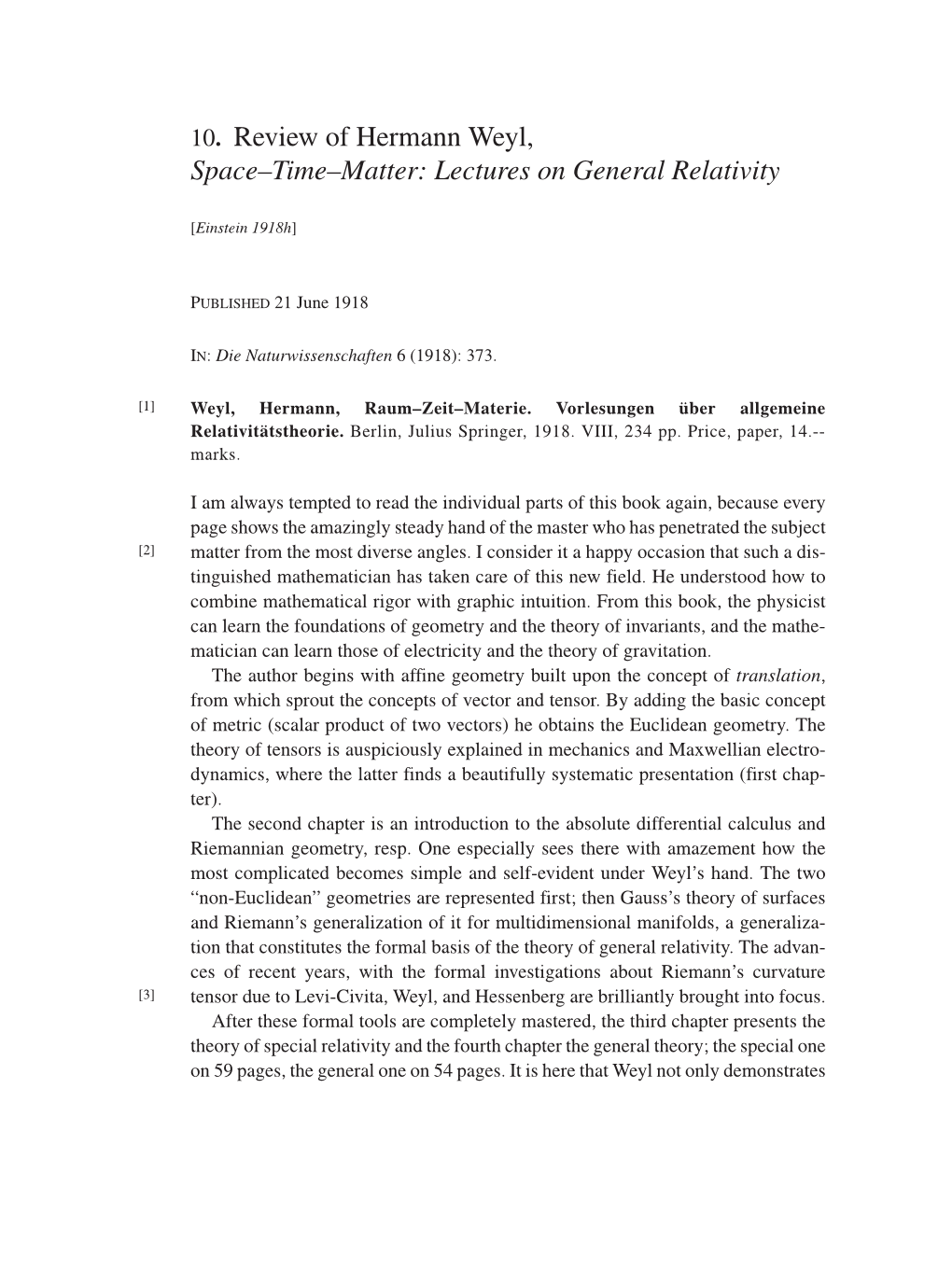6 2 D O C . 1 0 R E V I E W O F W E Y L ’ S S P A C E – T I M E – M A T T E R
10.
Review of Hermann Weyl,
Space–Time–Matter: Lectures on General Relativity
[Einstein 1918h]
PUBLISHED 21 June 1918
IN: Die Naturwissenschaften 6 (1918): 373.
Weyl, Hermann, Raum–Zeit–Materie. Vorlesungen über allgemeine
Relativitätstheorie. Berlin, Julius Springer, 1918. VIII, 234 pp. Price, paper, 14.--
marks.
I am always tempted to read the individual parts of this book again, because every
page shows the amazingly steady hand of the master who has penetrated the subject
matter from the most diverse angles. I consider it a happy occasion that such a dis-
tinguished mathematician has taken care of this new field. He understood how to
combine mathematical rigor with graphic intuition. From this book, the physicist
can learn the foundations of geometry and the theory of invariants, and the mathe-
matician can learn those of electricity and the theory of gravitation.
The author begins with affine geometry built upon the concept of translation,
from which sprout the concepts of vector and tensor. By adding the basic concept
of metric (scalar product of two vectors) he obtains the Euclidean geometry. The
theory of tensors is auspiciously explained in mechanics and Maxwellian electro-
dynamics, where the latter finds a beautifully systematic presentation (first chap-
ter).
The second chapter is an introduction to the absolute differential calculus and
Riemannian geometry, resp. One especially sees there with amazement how the
most complicated becomes simple and self-evident under Weyl’s hand. The two
“non-Euclidean” geometries are represented first; then Gauss’s theory of surfaces
and Riemann’s generalization of it for multidimensional manifolds, a generaliza-
tion that constitutes the formal basis of the theory of general relativity. The advan-
ces of recent years, with the formal investigations about Riemann’s curvature
tensor due to Levi-Civita, Weyl, and Hessenberg are brilliantly brought into focus.
After these formal tools are completely mastered, the third chapter presents the
theory of special relativity and the fourth chapter the general theory; the special one
on 59 pages, the general one on 54 pages. It is here that Weyl not only demonstrates
[1]
[2]
[3]
